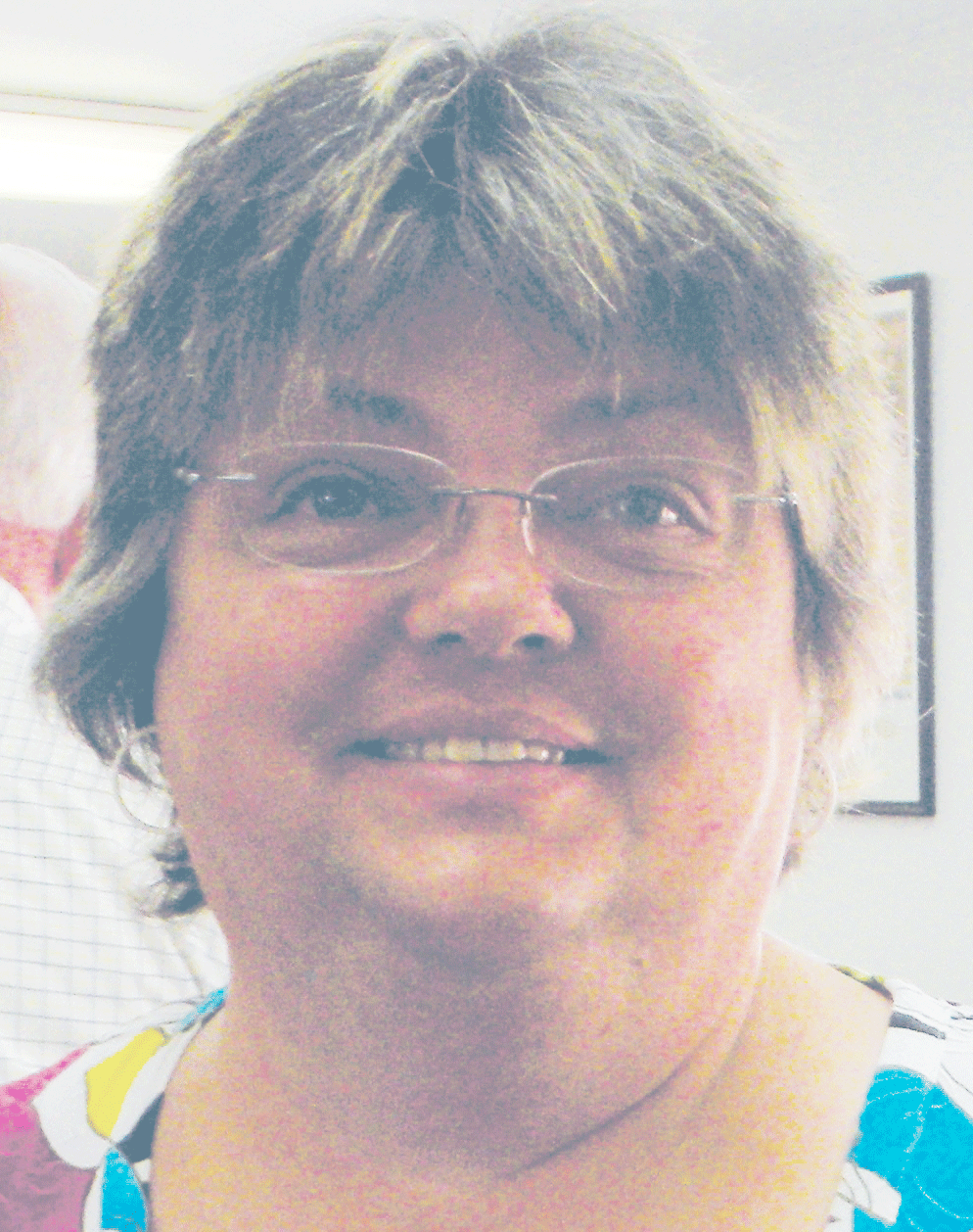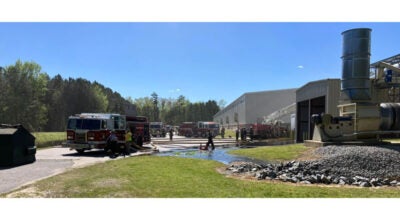Mold inspection is favorable for SCPS
Published 6:51 pm Friday, November 18, 2022
|
Getting your Trinity Audio player ready...
|
Southampton County Public Schools responded to a complaint about the presence of mold at Capron Elementary School by ordering air quality tests and mold inspections. The inspections did find some mold, which the school division is having eliminated, but the air quality tests ultimately yielded results commending the indoor air quality at CES, as well as Southampton Middle School and the Southampton High Vo-Tech Center.
SCPS recently shared a news release, or letter, containing a chronological account of how it has handled the mold complaint.
The letter was prepared by SCPS Coordinator of Auxiliary Services and Transportation Will Melbye, and near the end of it, he noted the following: “According to the Code of Virginia 22.1-138, Southampton County Public School Division is required to notify all staff and parents if tested (mold) levels are at or above the minimum levels, as determined by the Virginia Department of Health. The testing results provided by McKee Environmental (Inc.) fall below the threshold of both (Environmental Protection Agency) and VDH standards.
“Given these results, there is no standing requirement for this letter to be constructed, for the publication of testing taking place, or for any of the above timeline and associated facts to be published,” he continued. “Nonetheless, we believe that truth and clarity is the preferred route for everyone in the county. Providing the steps and results of this process for all to independently review and evaluate displays the division’s desire for forthright communication and that providing the best for all of those in our schools is at the heart of all decisions made and directions taken by Southampton County Public School Division.”
FRIDAY, SEPT. 23
The release’s chronology began with Sept. 23 when SCPS was made aware of a complaint filed with the Virginia Department of Education and the VDH centered around the presence of mold in Capron Elementary School. An initial inspection conducted that day by a local restoration company did not detect the growth of mold in identified locations or on reported surfaces.
“However, given the serious nature of the reports, and the possible impacts of compromised indoor air quality on the health of our students and staff, air quality tests and further inspections were ordered, utilizing experienced companies from the Hampton Roads area,” the release stated.
TUESDAY, SEPT. 27
Melbye writes that a follow-up inspection and indoor air quality test was performed by an environmental company from Newport News on Sept. 27.
“This company also did not identify signs of growth, and the air sample taken later provided a positive report on the indoor air quality for each location,” Melbye stated in the release.
THURSDAY, SEPT. 29
Melbye noted that McKee Environmental, of Chesapeake, visited the school locations on Sept. 29 to conduct an intense investigation of the areas mentioned in the complaint, along with other areas of concern.
“Given their situational expertise and extensive experience, McKee uncovered areas of growth that initiated the collection of samples for testing,” the release stated. “Samples were taken from surfaces in multiple locations, air from multiple indoor locations (both impacted and unimpacted spaces) and outdoor air at each location.”
FRIDAY, SEPT. 30
Belfor Restoration Services arrived on-site to provide mitigation and clean-up consultation and guidance Sept. 30, Melbye wrote in the release.
“The services necessary for proper care and cleaning of the school locations would be determined by the mitigation protocol developed by McKee Environmental,” he stated in the release. “The protocol would be developed utilizing the testing results, both surface and air samples, and the Environmental Protection Agency’s guide to Mold Remediation in Schools and Commercial Buildings.
“Guidance provided by both firms following their independent observations was that the areas inspected contained no immediate threat to the health and safety of the students and staff members, and the relocation of classes was not necessary,” Melbye added.
MONDAY, OCT. 3
He then stated that on Oct. 3, prior to receiving the results of McKee Environmental’s testing and using a preliminary set of protocols, the school division initiated steps with Belfor Restoration to prepare the impacted areas for cleaning and to insulate surrounding spaces.
TUESDAY, OCT. 4
The testing results from McKee Environmental arrived in raw data form on Oct. 4, and Melbye explained what they showed.
“According to the results, air quality in all indoor locations were of better quality and contained lower particle counts and varieties than that of outdoor air samples,” he stated in the release. “Surface samples were found to contain common particles, which were at or below acceptable EPA levels and standards.”
OCT. 4 LETTER FROM ERIC McKEE
Melbye provided, with the release, the Oct. 4 letter written to him by Eric McKee, of McKee Environmental, who is an accredited independent environmental professional and a licensed mold inspector.
McKee also gave a verbal report to the Southampton County School Board at its Oct. 10 meeting.
In his written summary of McKee Environmental’s inspections of Capron Elementary School’s guidance area and classrooms seven, eight, nine and 10, McKee noted that the company had completed its preliminary inspection of the requested areas, and he provided a summary of the company’s findings while the formal report was being prepared.
First, he noted that small amounts of visible mold — as defined by the U.S. EPA as being less than 10 square feet of mold — were identified in the guidance area and classrooms eight, nine and 10.
“All of the observed issues appear due to the age of the building or related to past water leaks now reportedly repaired,” he stated. “No moldy odors were present.”
Second, he noted that according to the American Industrial Hygiene Association, the presence of mold growth on a surface indicates there is a risk of it becoming airborne, so it is important to clean even small amounts of mold growth.
“At the directive of the superintendent, McKee provided preliminary cleaning recommendations yesterday to your mold remediation contractor, and that cleaning was underway today,” McKee wrote Oct. 4.
Thirdly, he told Melbye that samples were collected of the indoor air and some surfaces and were sent to an independent accredited laboratory to be analyzed for mold.
“It is the U.S. EPA’s recommendation that the kinds and concentrations of mold and mold spores in a school should be similar to those found outside,” McKee stated.
He noted that this study found the following:
- In line with the U.S. EPA’s recommendations, the kinds and concentrations of airborne mold spores in the building were similar to those found outside. In fact, indoor air mold levels within the school were more than 25 times lower than outside levels, which is ideal.
- All the molds identified in this study are normal outdoor environmental organisms.
- In the few locations where mold growth was found on surfaces, it was not identified as having a measurable impact on the indoor air at the time of this study.
“In conclusion, it is not uncommon to find small areas of mold within buildings, and this study found no evidence that these minor issues should cause undue concern, nor do we anticipate that cleanup will be difficult and (it) should be able to be done around normal school schedules,” McKee wrote.
Speaking to the school board Oct. 10, McKee made a point to note that it is still important to clean up even small areas of mold.
“(They’re) not something we want to just take lightly, but we were able to provide a report to the school system so you all can target-clean those certain areas,” he said.
WEDNESDAY, OCT. 5
Returning to the account of the SCPS release provided by Melbye, on Oct. 5, basic steps to mitigate areas of concern were taken by Belfor Restoration. Surface cleaning with antimicrobial solution and high efficiency particulate air (HEPA) filter vacuuming were performed.
“Items that were identified to have been impacted by growth were evaluated based on their ability to be properly cleaned and separated accordingly,” the release stated. “Also, the mitigation protocols were finished by McKee Environmental and shared with the division later that evening.”
THURSDAY, OCT. 6
Melbye wrote that the following morning, Oct. 6, district- and school-level personnel held a meeting to discuss the protocols and next steps with McKee Environmental and Belfor Restoration.
“At the time of the meeting, the preliminary mitigation actions performed by Belfor Restoration ensured that the environmental health and safety of our staff and students were maintained throughout the entirety of the protocol program,” Melbye wrote. “All areas, surfaces and items identified by the McKee Environmental protocol, which strictly adheres to EPA mitigation guidelines, will be addressed accordingly.”
Melbye noted that restoration items being utilized to fully execute the protocol include, but are not limited to, 8 mil plastic to create barriers, proper personal protective equipment, HEPA vacuums, disinfectant/antimicrobial solution, HEPA air purifiers/scrubbers and the disposal of items that do not conform to the standards of mitigation.
“Currently, with the completed mitigation efforts by Belfor Restoration, we are able to ensure the environmental health and safety of our staff and students is being maintained,” Melbye stated in the release.
QUESTIONS FROM THE SCHOOL BOARD
During the Oct. 10 school board meeting, Franklin District Board Member Lynn J. Bradley asked McKee, “What about the middle school, the Vo-Tech and the library?”
McKee said that at the middle school, McKee Environmental looked at three areas and focused on the library.
“The school system, I believe, had had several other vendors there trying to identify if there was an issue based upon I believe it was a report of mold odor or something like a mold odor,” he said. “We came in, did an assessment the same way, just a visual assessment, and found mold in the library. And if anybody has been over there, we made recommendations to basically isolate the library so that we don’t have any risk of exposure.”
He said McKee Environmental took air samples, which look good. He mentioned that SCPS had already taken measures to put HEPA-filtered air cleaners in the library based upon a concern, which he said he thinks helps.
“At the present time there’s been some sorting of books and just some sealing off of that area while decisions can be made what to do and how to do it,” he said Oct. 10.
Moving to other areas of the school system in his response to Bradley, McKee said, “The middle school and the Vo-Tech, I guess it’s the business offices that you have there — not really much of an issue at all. You all are going through just a really tremendous refresh process. The carpet’s coming up, they’re repainting, so we found a couple of very minor issues, but other than the minor issues, I think it’s all going to be addressed in the process of the refresh.”
“So no student, teacher or anybody has ever been in any type of danger of breathing in any of this?” Bradley asked.
McKee emphasized that he could only speak to when McKee Environmental came in and did its study.
“The EPA is a great resource for trying to provide balance between when we should be concerned and when we should not be concerned,” he said. “There’s always going to be mold in the air, moving all the time. It’s outside in the air.”
He reiterated the importance of comparing the indoor air to the outdoor air, checking to see if there is anything unique about the indoor air and if there are high levels in the indoor air.
“So it’s really more about risk of exposure,” he said. “When you come into a building, is there more of a risk of you getting exposure? But from the data that we collected, there wasn’t any evidence of that in any of the three schools, so that was good news.”






